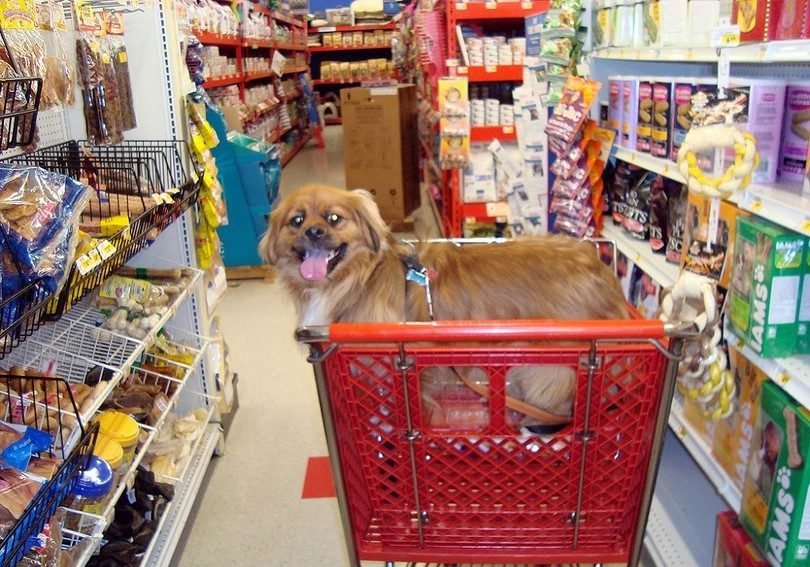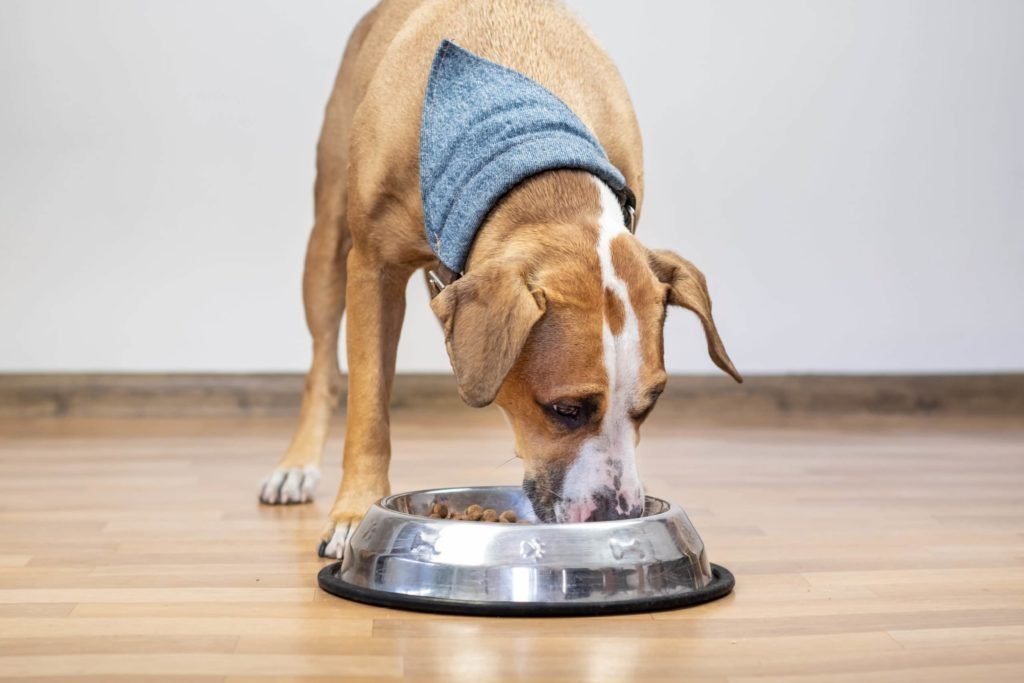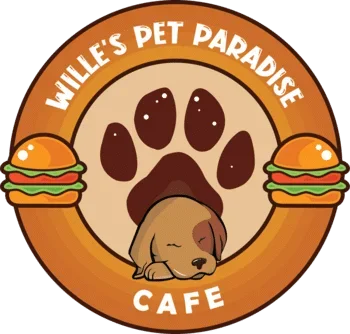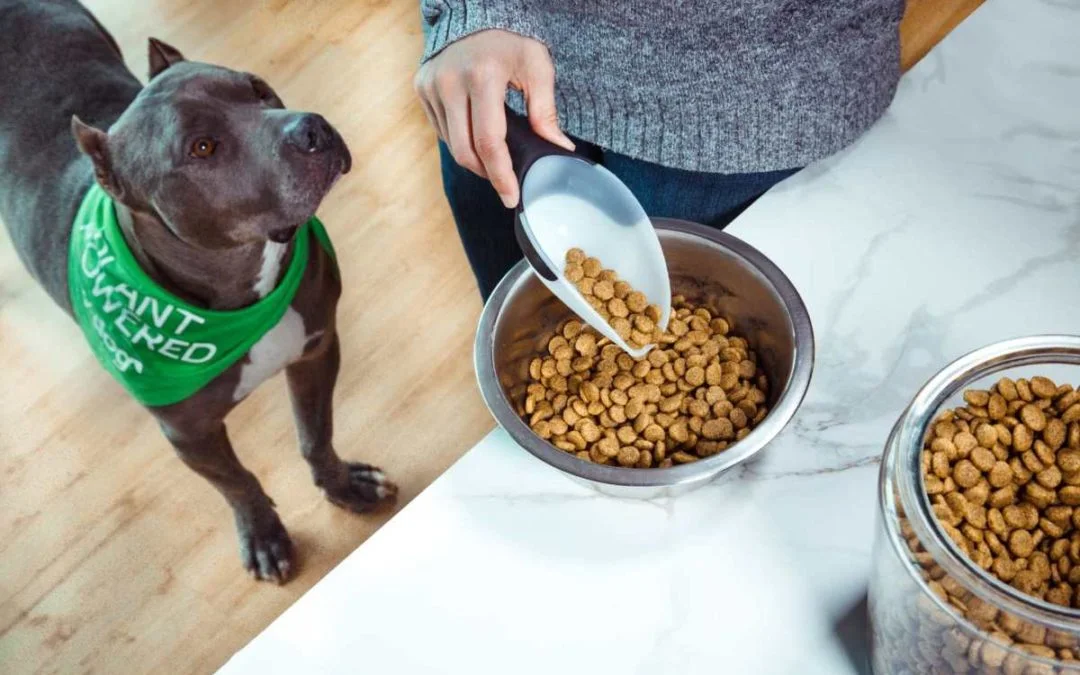It is important for dogs to get good nutrition. This keeps them healthy and happy. However, there is no fixed rule for how much you feed your dog or what you put in his cup. That’s because it’s special for every pooch.
“Dog’s nutritional requirements differ according to breed, height, age and health” Jerry Klein, DVM, US Kennel Club (AKC) Chief Veterinary Officer, says.
Common rules when filling the platter of your dog’s.
Commercial Foods For Dogs

It may not sound like much, but commercial dog food is meant to meet all the nutritional needs of a dog. Most products contain meat, cereals, vegetables, fruits, and vitamins. The American College of Veterinary Nutrition reports that commercial food is a safe and healthy feeding choice for dogs.
Make sure you pick the right food for the stage of your dog’s life — baby,pregnant, breastfeeding, or adult. Foods are approved for all stages, too.
Check the box for a promise from the Food Safety and Standards Authority of India (FSSAI) that the food is “complete and balanced.” “Complete” means that the food has all the nutrients dogs require at that stage of their lives, and “balanced” means that the nutrients are in the correct amounts. Both of these can have benefits when it comes to wet or dry food. “It is believed that dry food is better for a dog’s teeth. Wet food contains more moisture, which is particularly helpful for those dogs that don’t drink much water,” says Klein.
How Many Times And How Much?
Puppies 6 months and younger should eat 3 to 4 times a day according to the AKC. They can eat twice daily at the age of 6 months. When pups are adults, depending on how much exercise they get, they may get one or two meals a day. The easiest way to get your dog to know what’s right? Check with your Veterinarian.
The same is true for the amount you put in their cups. Klein says you can begin by following the guidelines for serving size on the food label for your dog. Yet your veterinarian can be precise about the right amount for his age, breed, and activity level. A young border collie playing and running for most of the day may need a lot of food to keep him going, particularly when outdoors it’s hot or cold. But an old Chihuahua that lounges mostly in your lap would certainly not.
Steps To Choose Best Food For Dogs

Good dog food should not disturb the digestive system, give your pup plenty of energy, keep his coat clean and shiny and his eyes open and warm. Obviously, this is not a small feat, but these steps might just give you a better handle on a complicated task.
Step 1: Consider age, behavior, breed and reproductive status of your dog
The physical characteristics, behavior, and overall health of your dog is enormously important when choosing appropriate dog food. Puppies and mothers that lactate need more calories per day, while older pets need less. Similarly, highly active breeds need more calories than breeds of couch potatoes–the quality and amount of food that is properly fed can help your dog prevent health problems due to obesity.
Step 2: Know the food labeling “buzz words.”
Do you think that the actual wording on the box is a kind of code for how much of any protein is present in the food? Simple names such as “Beef for Dogs” or “Chicken Dog Food,” according to the FDA review of pet food labels, suggest that the protein mentioned constitutes 95 percent of the total product, not including the water content. With water added, the results are 70 percent required.
The clear predictor is the keyword ‘ dinner;’ products with labels such as’ Chicken Stew Dinner’ and’ Salmon Dinner for Dogs ‘ contain just 25 percent of the protein. The same rule applies to words such as “platter,” “entree,” “nuggets,” and “formula.” If there are several ingredients on the package, both must exceed 25 percent of the total product combined.
If you see the term “with cheese,” “with salmon,” or “with” something, it needs just 3 percent of that ingredient in the food. For instance, if a dry dog food label reads “Chicken Dinner for Dogs” and adds “with cheese,” it includes 25% chicken and 3% cheese.
Last and certainly least, if the food appears to be “beef flavor” or “chicken flavor,” trace amounts of beef or chicken only need to be present–just enough for a dog to recognize the taste.
Step 3: Learn how to read the ingredients.
Keep in mind that weight-based ingredients are specified on the bottle, and meats or meat meals take the first place because they have high water content. Choose the first ingredient in a meat or poultry meal. Dogs are omnivores, and should only be served a vegetarian diet in extreme circumstances (such as very bad allergies).
“Meat” may include an animal’s skeletal muscle, as well as liver, diaphragm, and esophagus tissue, among others. Like meat intended for human consumption, it may also contain fat and gristle. “Food by-product” is, on the other hand, the unrendered parts of an animal without food, and may include the lungs, kidneys, liver, blood, bone, etc. By-products tested by India’s strict Food Safety and Standards Authority (FSSAI) should NOT include fur, ears, teeth or hooves. “Meat meal” implies any food made from animal tissue.
Just make sure, on your quest, that the first ingredient is not a grain, tuber, or vegetable, like ground corn. Just because corn is digestible (when ground) doesn’t mean it has a high nutritional value. Corn has low protein and an unimpressive content of vitamins and minerals, and the only reason that marketers boast about this commodity is that it is cheap. For dogs corn is by no means “bad “–just don’t fall for ads promoting its nutritional benefits.
Step 4: Decide if your dog is grain safe.
When you think that you need to turn to a grain-free diet because you believe Fido has a food allergy, it’s a really good idea to contact your vet. Grains are not bad for dogs unless they have a severe allergy and often the higher price tags that accompany such formulations can be avoided
Do you not know if your dog has an allergy or intolerance to the food? Excessive paw leaching, scratching, vomiting, or diarrhea can be symptoms and a veterinarian can help you find the response. Even with a reported allergy, it is often the main protein of the diet (such as chicken or beef) that causes it, not the grains. Once you invest in the hype–this involves gluten-free dog foods, too–consider your dog’s individual needs.
Step 5: Check for declaration of nutritional adequacy.
Usually placed on a bag with the rest of the nutritional information or maybe “provides complete and balanced care for the treatment of adult dogs,” or for “all life stages,” or “puppies,” the adequacy statement may suggest. Please look for the FSSAI statement on the back; organization membership is optional, but high standards from FSSAI ensure there is nutritional value.
Step 6: Prefer your brand
After all that nit-picking, eventually, you’ve selected a food brand you think your dog would enjoy. Now it is equally important that you do some distributor research to ensure quality control and the correct product sourcing. Such issues are not needed to be mentioned on the label so it is up to you to give yourself some peace of mind.
Willes Pet Paradise is concern about your pet. We provide a chart for the best diet to be followed for your pet according to the breed, age, and health condition. All arranged various health improvement programs and other fulfilled activities.

